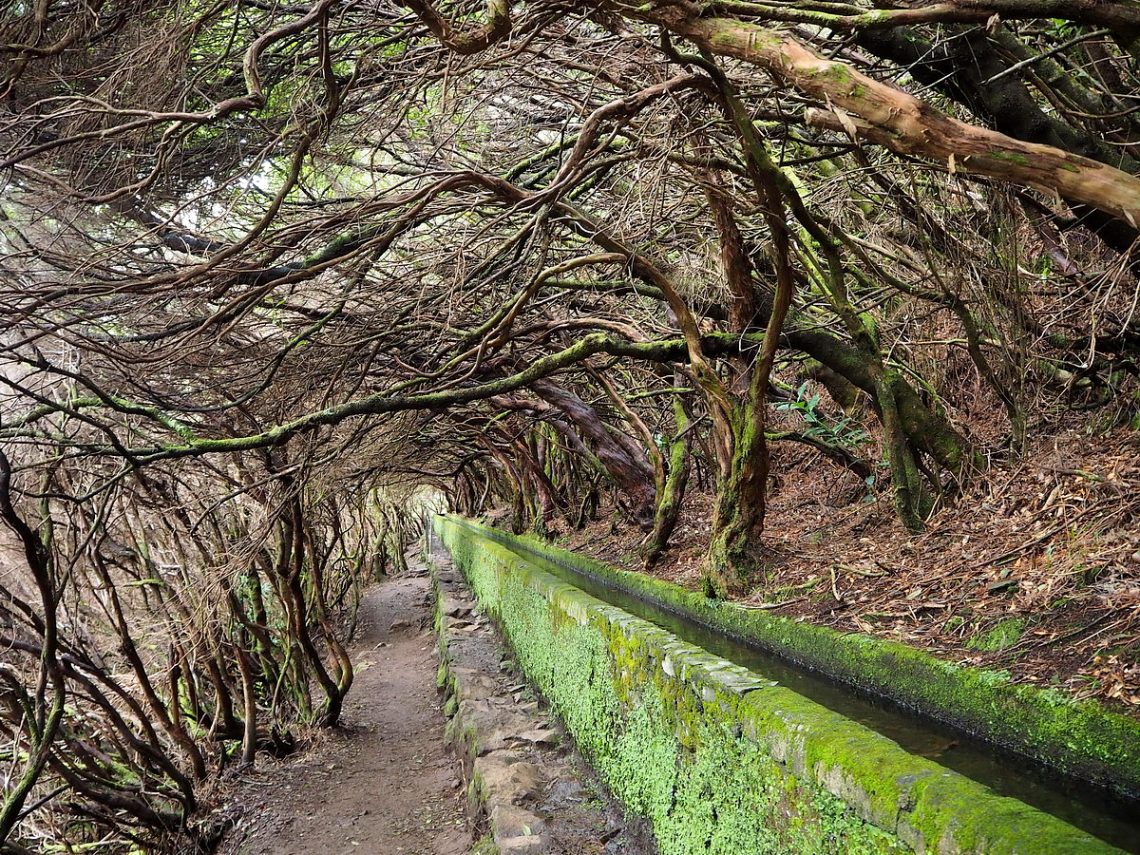To be honest, I am not a typical fan of hiking, but there are some places that make me leap in my trekking shoes. Despite being so small, Madeira offers paths of all lengths and difficulties. During my 10 days’ stay, I visited many of these – let’s discover some of them.
One of the best things about Madeira is that you can go on a hike in the morning, then swim and relax in the ocean in the afternoon. From the central town, Funchal, it is only an hour’s drive at most to any other point in Madeira. This also means that 1 to 1½ tank’s worth of petrol is enough to explore the entire island, which is really budget friendly.
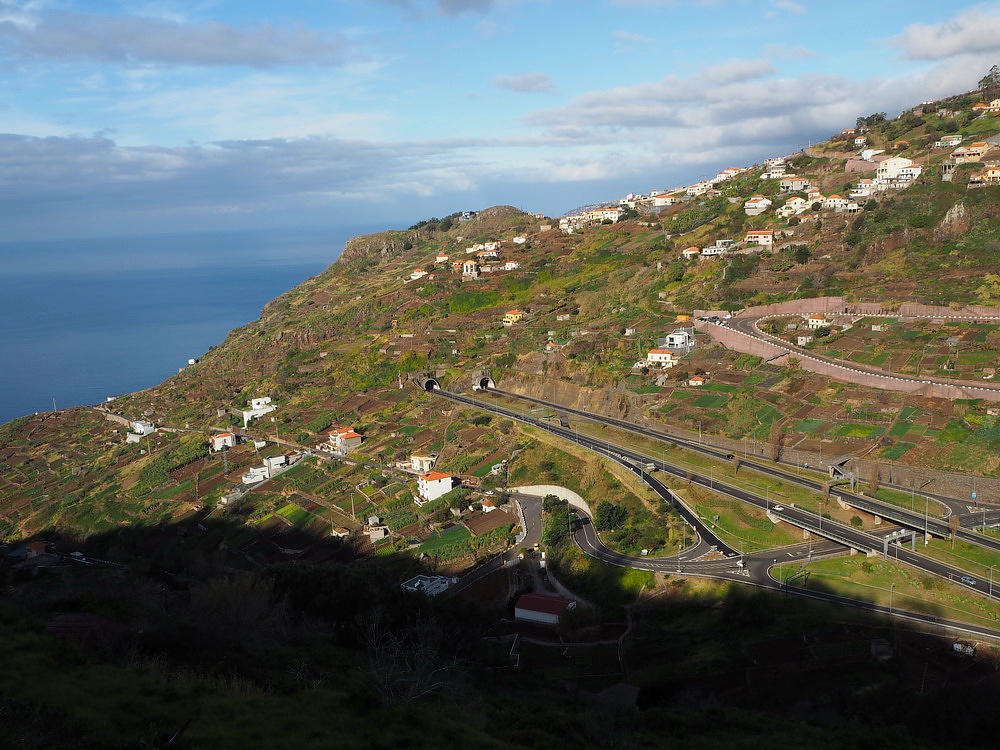
Madeira is like a huge landscape model
This tiny island is full of nature’s beauties and its hiking opportunities are almost endless. From the lightest romantic stroll to the most challenging mountaineering, you can find routes of every grade. It is not by chance that Madeira is a favorite destination for hikers. Many tourists come here specifically for these walks, such as the Hungarian couple I met during my stay.
A quick note about driving: anyone who dislikes driving along bendy roads or starting a car uphill (in case you must stop for oncoming traffic) should choose a less hilly island to visit. On Madeira the roads are mostly steep and narrow. Although the highway running along the edge of the island is of fantastic quality, if you want to see the inner parts or if you need to cross Funchal, you will need to rely upon all your hidden driving skills. Due to the large amount of tunnels and viaducts, you soon get the feeling that you’re driving on a huge plotting board.
Another thing to note about driving is parking: because of the narrow streets, the locals have developed “parking right next to the wall” skills of the highest level. This skill is not so easy to achieve as a tourist!
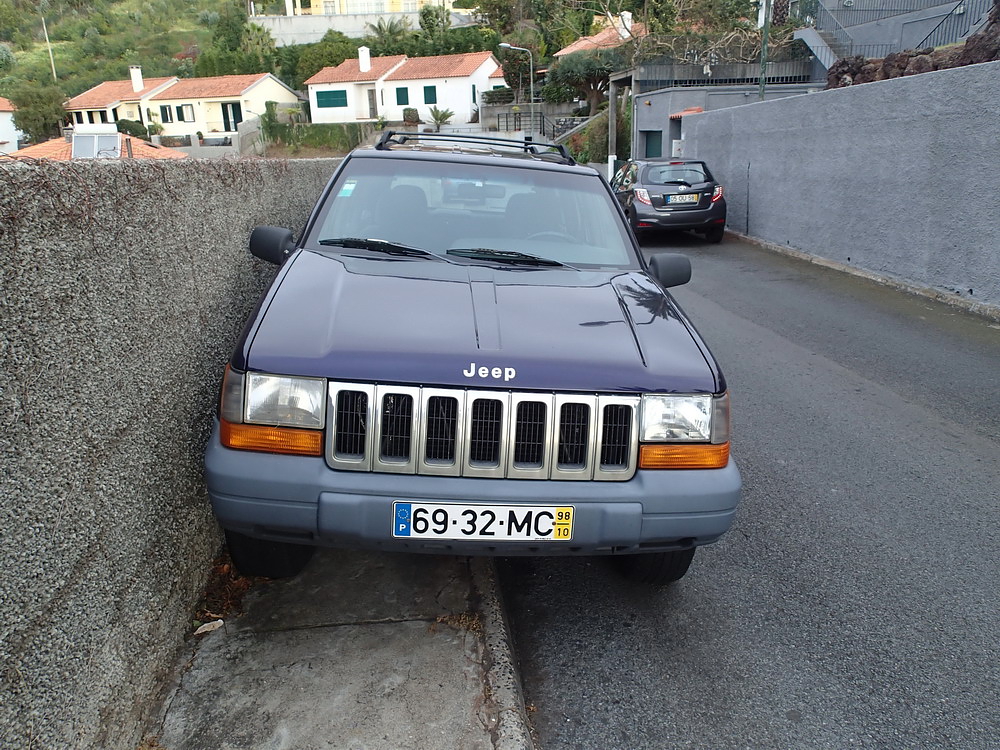
Levada tours were my favorite
But back to travelling by foot: of the many strolling opportunities on the island, my absolute favorites were the “levada tours” which are a Madeiran specialty. Levadas are irrigation channels that run all across Madeira. Similar systems have been constructed in other places around the world ever since Roman times, but none of them are as effective and complex as those in Madeira.
The first levadas were constructed in the 15th century, when Portuguese settlers started to cultivate sugar cane and banana on the island. During the next few centuries, most of the ditches were ruined and disappeared, but from the 19th century people started to rebuild the levada system. Since the north-western part of the island is more humid and cool, the rain that falls there is transported to the drier southern parts with the help of these ditches.
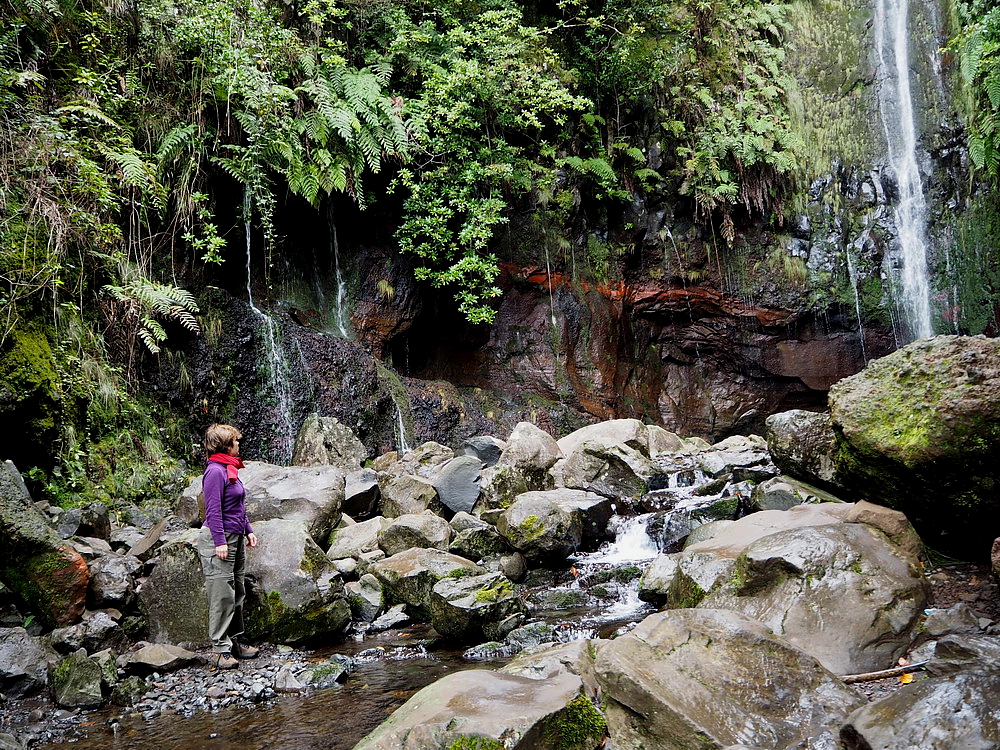
Levadas were constructed by hard labor, carved into the rock by hand. These days the ditches reach up to 1400 km in length, 85 km of which are in tunnels. In older times levadas were private property, now they are under the state’s control, but anyone can pay to use them: ditches run on both sides of a street, and if someone pays for it, they can direct the water into their own gardens with the help of a small hole in their fence. After that, it is closed by a small iron plate.
You’re possibly wondering what these levadas have to do with hiking? The answer is very simple: every ditch has a narrow service road running alongside it. This helps with the maintenance of the ditches. These service roads are narrow paths. There are some sections where you will find only a 30 cm wide piece of stone, in other places you find wider, more convenient pathways (the steeper parts are made safe with handrails). They are all suitable for walking, and the best thing is that it is impossible to miss your way: you just have to follow the chosen ditch. Another benefit is that you do not have to worry about being in the best fitness condition: where a road would be too steep for water to flow, levadas are redirected through tunnels which you can walk through easily.
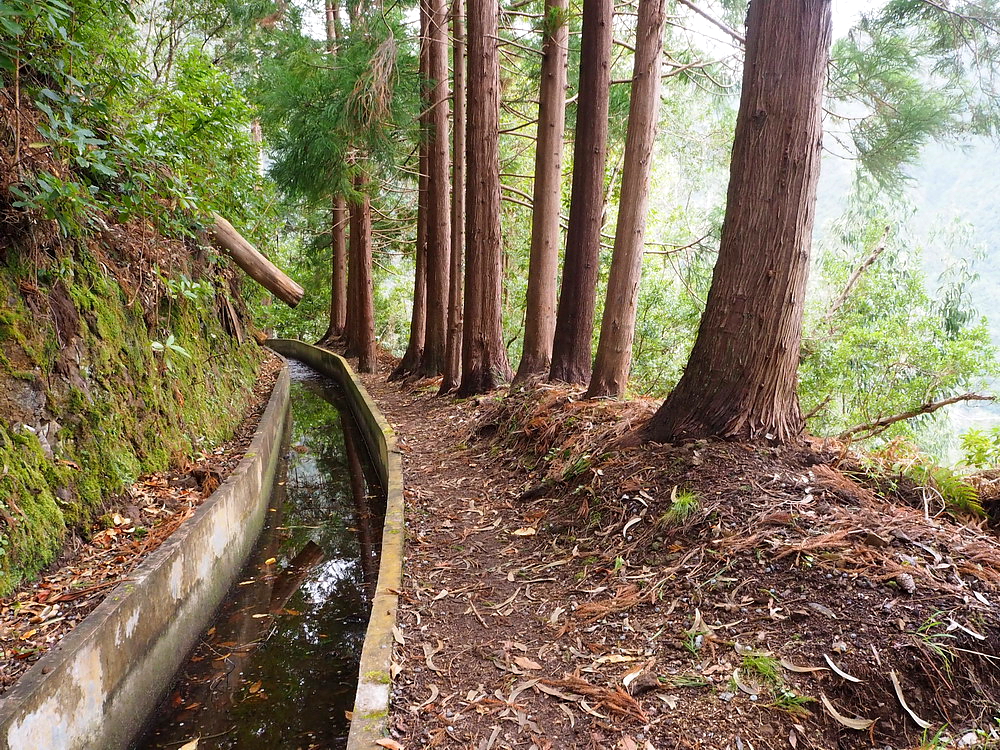
Plenty of choices
In Funchal you have the opportunity to pay for half or all-day programs including a guide or picnic lunches, for only 20-50 euros. But as I rented a car, I chose excursions where the endpoint was the same as the starting point. This meant that after parking my car, I could walk to a waterfall or climb a mountain and, using the same path back, I could easily return to my car. Fortunately I had plenty of choices.
One of the shortest levada walks is the Vereda dos Balcões tour, only 1.5 km long, which leads to the Balcões viewpoint. This one really is suitable for everyone, from families with small children through to the less fit and elderly. This short section is also really romantic, and this was true in spite of the fact that I was there in drizzling rain. When I got to the viewpoint, the weather gave me some mercy, and for a few minutes a wonderful rainbow surrounded the mountains. However, after a while, heavy fog descended and I could not even see right in front of my nose.
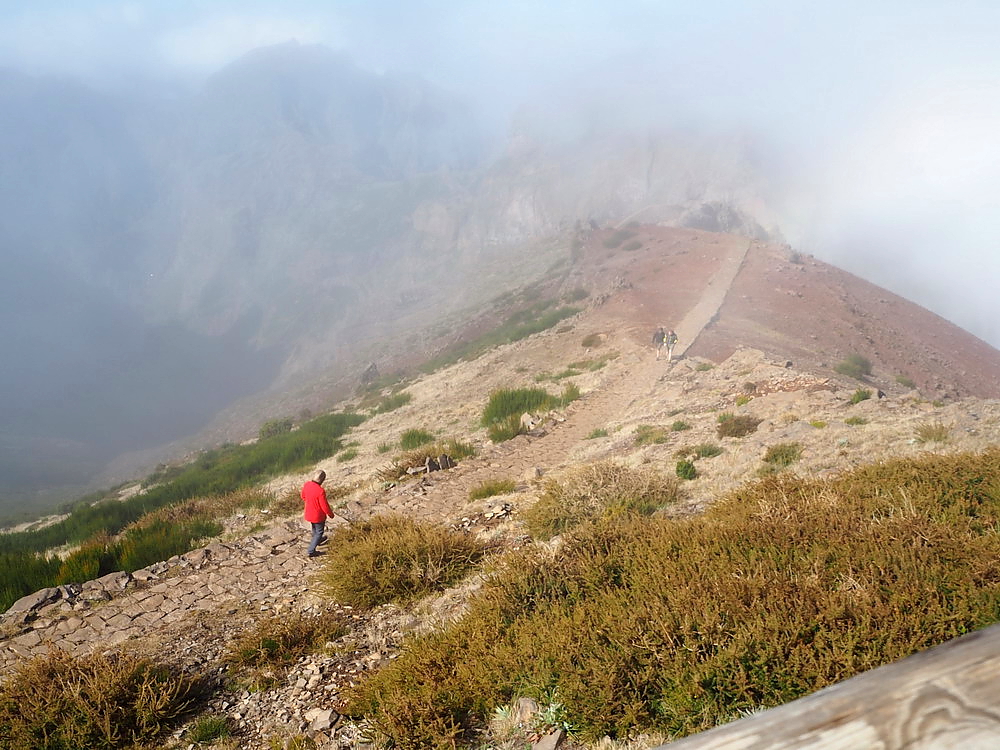
Gorgious nature
Going up a level in difficulty is one of the most popular tours – the 4.4 km long Levada das 25 Fontes (PR6), which – as its name suggests – leads you to 25 waterfalls. There are no huge elevation differences, except at the start, where you have to descend from Paul de Serra, in the center of the island, along a surfaced road into the valley, and this is quite a big load for your knees. Fortunately this steep part can be skipped on the way back, as I discovered a minibus takes passengers back-and-forth along the way for 3 euros (no other vehicle is allowed to drive to the valley).
Throughout my many travels I have seen loads of waterfalls, so they were not the highlight for me, rather the road itself. Walking along the small ditch was extremely romantic, in some cases next to the edge of ravines, enjoying the richness of the woods. Since this part of the island is very humid, you can see huge ferns on the sides of the road.

I was strolling with my umbrella under waterfalls
As a passionate “world heritage hunter”, I could not miss the 6.5 km long Levada Caldeirao Verde (PR16) tour, which starts at Santana, in the northern part of the island and leads to the only world heritage site on the island, the Laurel Forest. This forest, covering at least one-fifth of the island, is at least 15 million years old and one of the rare representations of plants that covered the Earth before the last ice age.
The ditch cutting through the forest is from the 18th century and, in some places, runs alongside 100 metre deep ravines. In other places, waterfalls crash on the road – impossible to pass by – but fortunately I knew about these and I took a raincoat and umbrella as well, making the other tourists giggle when they saw me passing by.
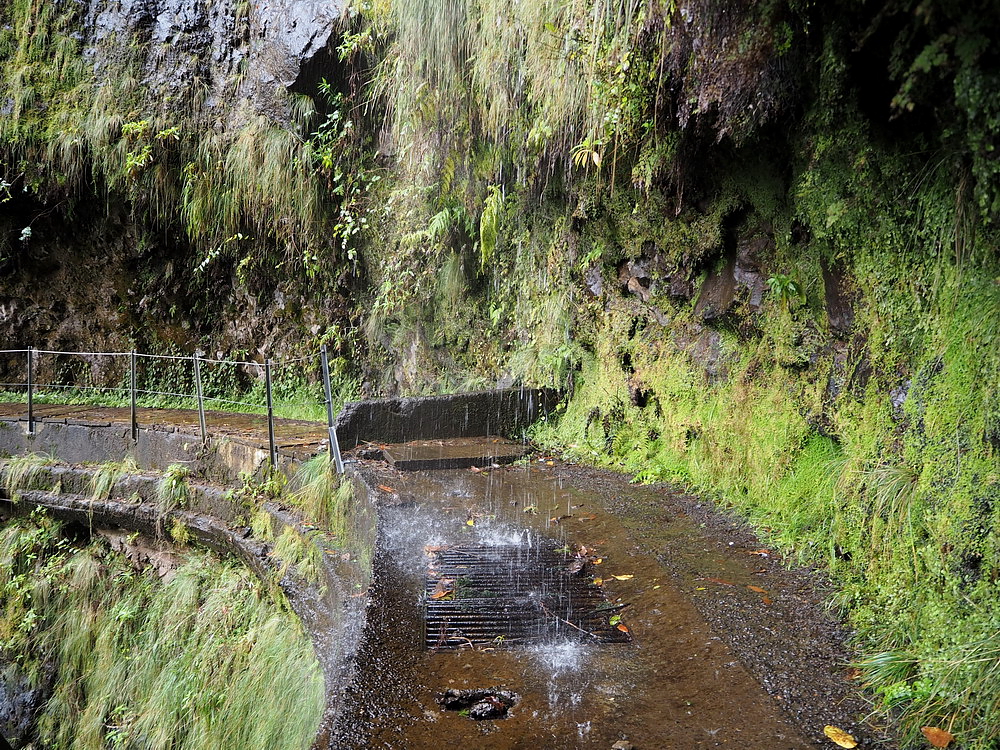
The most confusing situation is when you get to the end of a tunnel, where you see the water crashing, and you cannot decide whether it is a waterfall or a heavy rain. It was also funny meeting someone on a 30 cm “wide” rocky edge, as one of you would have to go back to a safe place in order to let the other pass.
Getting back to the starting point of the tour, I made my way to the special “A”-shape thatch roofed houses, that can only be found here on the whole island. These houses are mementos of the old agricultural villages of Madeira.
Clouds were flowing beneath my feet
The favorite route for mountain hikers is the 7 km long route connecting the two highest points of the island, Pico do Areeiro (1817 m) and Pico Ruivo (1862 m). Most of the time the route is closed due to the weather and the viewing conditions are often unpredictable. As a hiker with less practice, I chose an easier way to get on the top.
Similar to the tour into the valley, I first had to get to Santana. Driving towards the parking spot, I almost decided to turn back home because of the heavy fog. Luckily I did not do so. As soon as I got there, the sky cleared up and I had a great walk above the clouds right up to the mountain top, 2.8 km away. It was wonderful to have this view from a 2000 m high mountain and not from an airplane.

This route is not too difficult either. I met a young couple with a baby in a carrier, but I also saw some happy elderly gentlemen, who were strolling towards the top slowly with their nordic walking poles. By the time I had soaked up this fantastic view and returned to my car, the fog descended again, and I had to drive really carefully on the narrow serpentine roads back to my hotel.
Snow is rare
Even here, on the highest point of the island there was no snow at all, since it is very rare on Madeira. A local lady told me what an experience it was for her to see snow for the first time in her thirties, whilst on a trip in the Netherlands. When she went out in the street, she automatically opened her umbrella but, after seeing that others were not doing the same, she just closed it and enjoyed the feeling of snowflakes landing on her face.
Here, on the island you will never see a snow-covered landscape. Sometimes some snowy-icy rain falls, which inspire the local people to hurry up the hill for “snow watching”. However, as they do not have experience of driving on slippery roads and nobody has winter tires on their cars, police often close the roads leading up the hills to prevent accidents.

A dramatically beautiful walk on the rocks
In Madeira, you can not only walk on the mountains or along levadas, but at the seaside as well. The most spectacular route can be found on the easternmost corner of the island. You have to drive right to the end of the highway, until you reach Ponta de Sao Lourenco. Here you can leave your car in a big parking lot built for this purpose, and then go on walking to the easternmost point.
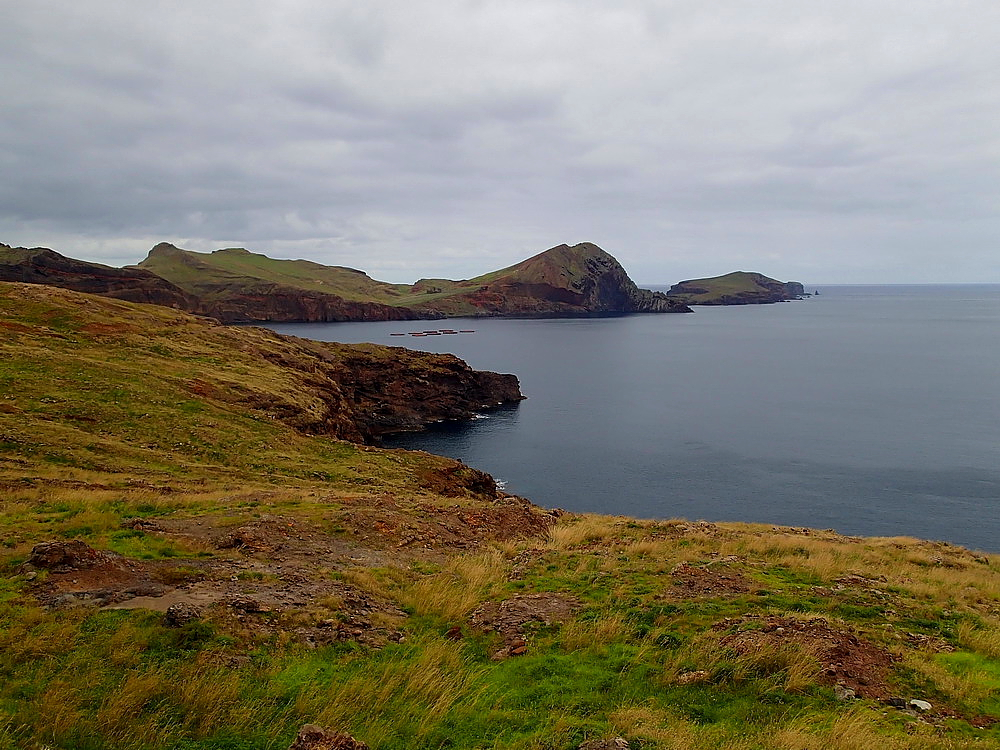
This 4 km long path differs tremendously from the other routes on the island. You do not have the feeling of being on a subtropical island. Rather it reminds you of being in Scotland. While Madeira is almost fully covered by thick woods and parks, you cannot see any trees on this volcanic rocky land. There are exciting and special plants instead. Out of the 138 species of plants that can be found here, 31 are endemic, which means they live nowhere else on Earth. Birds are also unique. Although I could not see any, their twitting and other sounds could be heard all the way along. It was a really special feeling to walk on this curvy road, while seeing the ocean on both sides of the narrow peninsula.
I left this dramatically beautiful walk for the last day of my stay, and it was really a stunning end to my vacation.
I really believe this island is a paradise for walkers. From Funchal’s botanical gardens, through to the romantic levada tours to the rough mountain tops there is a route for everyone on this small island.
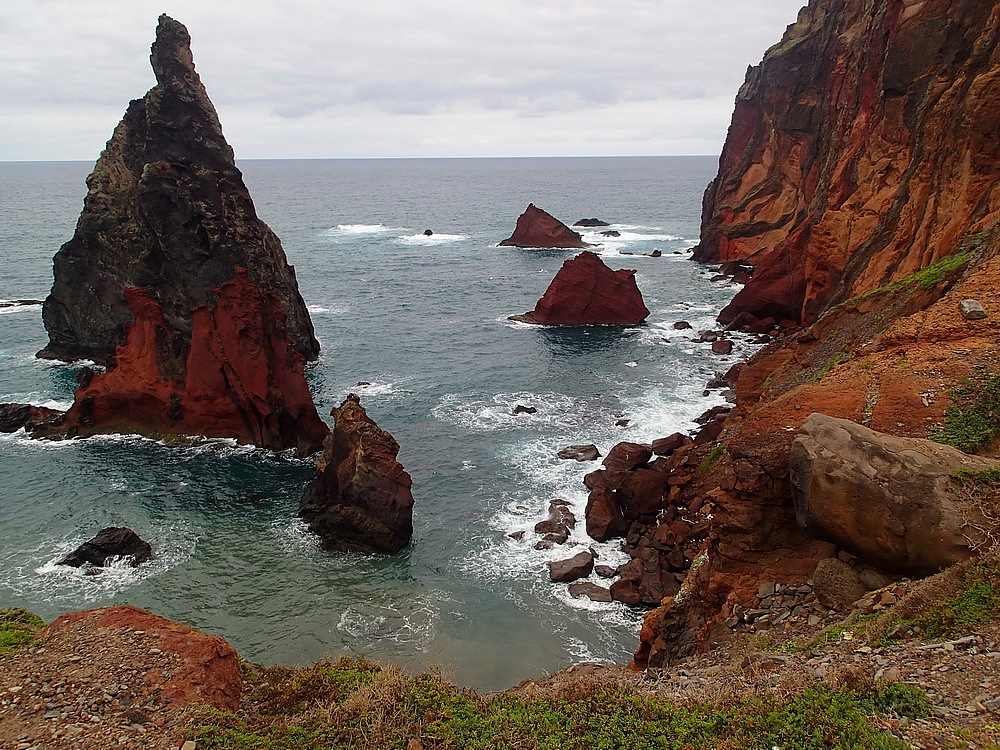
Practical advice for those hiking in Madeira
- In Madeira it is easy to meet all four seasons in a single day. One day, I was hiking in the mountains in a thick sweater and raincoat, but 40 mins later in Funchal, I was sunbathing in my bikini next to the hotel’s pool. The weather is completely unpredictable, so the best thing to do is to have your raincoat, scarf and gloves always with you.
- Because of the tunnels, always carry a torch with extra batteries.
- You need good hiking shoes because roads are often slippery and muddy.
- At the starting point of all routes you can find emergency phone numbers – make a note of them just in case of an accident.

